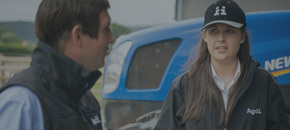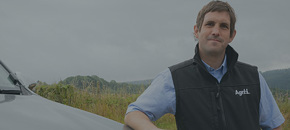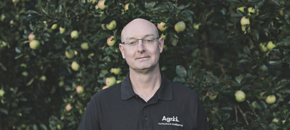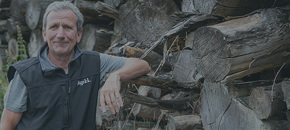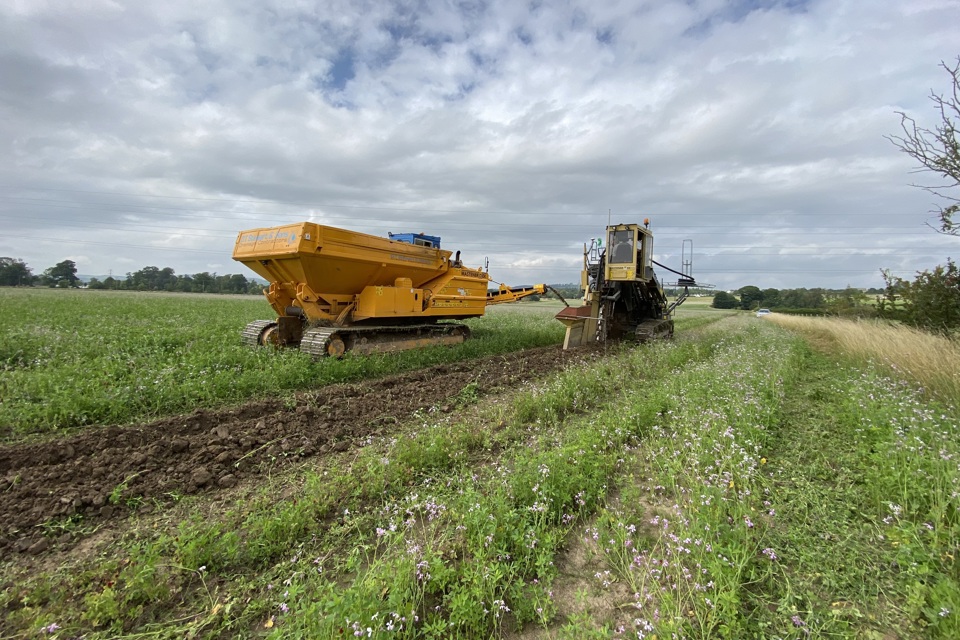
Cambridgeshire farm improves field drainage
Case Study - 24.03.21
Cambridgeshire farm overhauls drainage to improve soil
Worsening blackgrass issues and consecutively wet winters have driven East Wryde Farm to overhaul their entire drainage system.
A five-year plan has been developed to tackle the problem, through discussions between Agrii Regional Technical Advisor, Will Foss, and David Knott, Manager of Trumpington Estates which part owns the farm.
The plan includes re-profiling ditches and clearing land drains with the help of a new £20,000 S-S Professional Drainjetter, manufactured in the Netherlands and supplied by Stowmarket-based Mitchell-Rowlands.
It’s hoped that improving the drainage will lead to better soil health, and provide a basis for potentially adopting regenerative practices in the future. Will also hopes it will help reduce the farm’s blackgrass problem.
“This needs to be viewed in the context of increased interest in soil health and regenerative agriculture,” says Will.
“There are various basic principles which need to be addressed before farmers get too caught up with new regenerative practices, and in my view, drainage is the most important of these.
“The immediate practical benefits will be a wider window to work the soil in the right conditions and travel across it with machinery without causing structural damage. It will also help to reduce and manage the blackgrass problem and ultimately produce higher-yielding crops.
“It is also important that we don’t create any negative effects, such as leaching of pesticides or nutrients through the drains. As well as careful planning, we will be looking at possible mitigation methods to reduce the potential negative effects of drainage, through the use of silt traps and filters for example.
“Projects like this show the benefits of farmers talking to their advisors and agronomists and working together to solve longer-term wider management challenges; not just shorter-term in-season crop management.
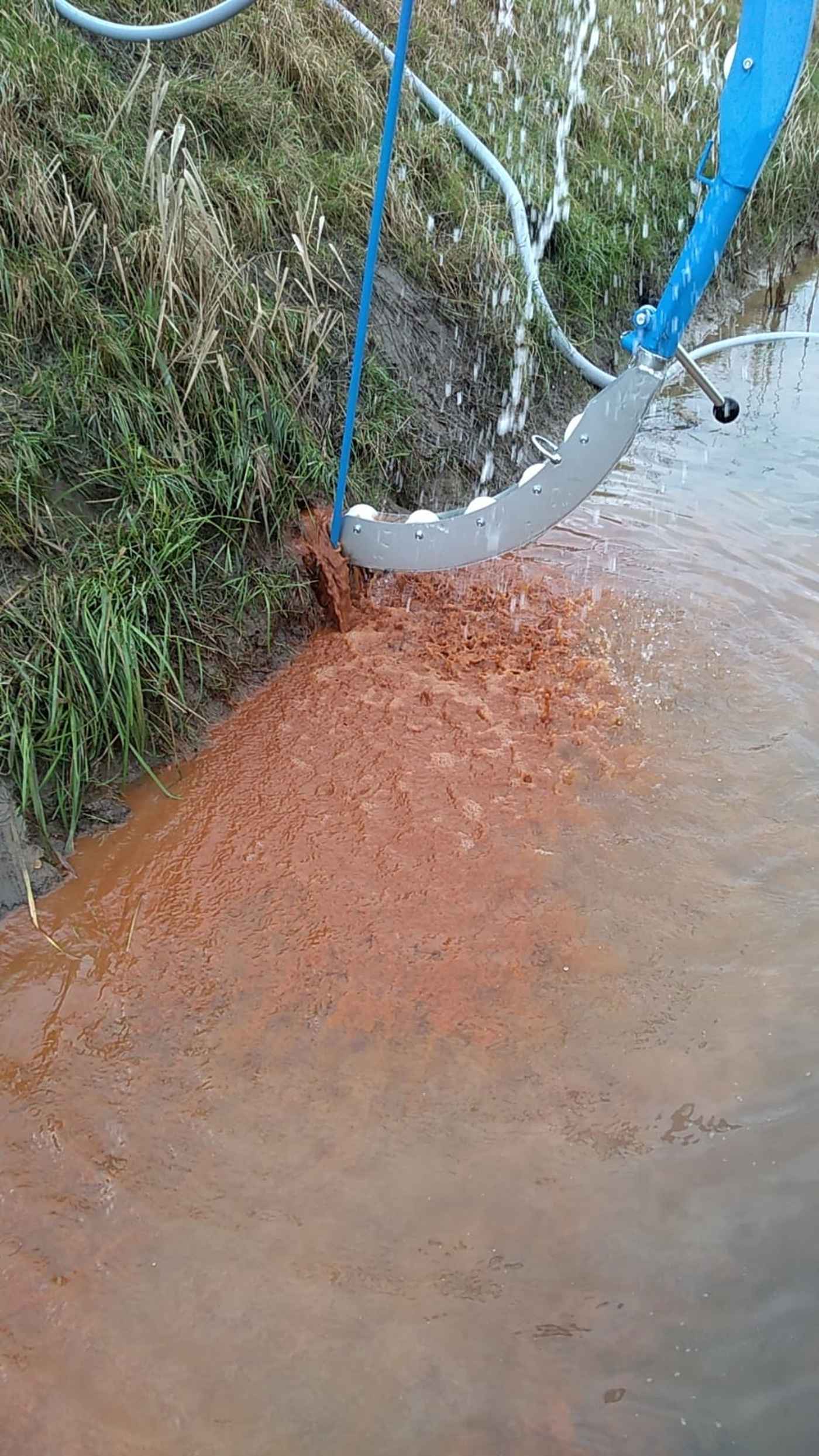
A Photo Of The Jetter Working And Removing Ochre (The Red Colour) From A Drain
About the farm
Located on the edge of the Fens at Thorney in Cambridgeshire, East Wryde Farm grows around 785ha of combinable crops, forage maize for anaerobic digestion and cattle feed, grass silage and sugar beet.
The farm has a further 10 ha of game and wild bird cover and some 35 ha of grass margins in Countryside Stewardship alongside most of the ditches.
Because of blackgrass issues, cabbage stem flea beetle and weed control challenges, oilseed rape has previously been dropped from the rotation. Organic matter is returned to the farm both as cattle manure and digestate from neighbouring farms.
About its drainage problems
Four ditches maintained by the North Level Internal Drainage Board (IDB) divide the farm into rough management blocks.
“The IDB provides clear ditches for the farm drainage system to run into,” explains Will. “We have a system we can drain into and we have split the farm into four or five management blocks from a drainage point of view.”
Most of the field drains run in parallel to each other and straight to the ditches, avoiding the complications of herringbone layouts. The oldest recorded drainage schemes date from 1974 and consist of tile drains, with other later installations in the 70s and 80s, together with a few additions over the last 30 years.
“The farm ditches are due to be dug out and re-profiled,” says Will. “Whilst some of the drain outfalls sit well above the water level, due to undulations in the fields and the state of the farm ditches, many of them now sit below the water level.”
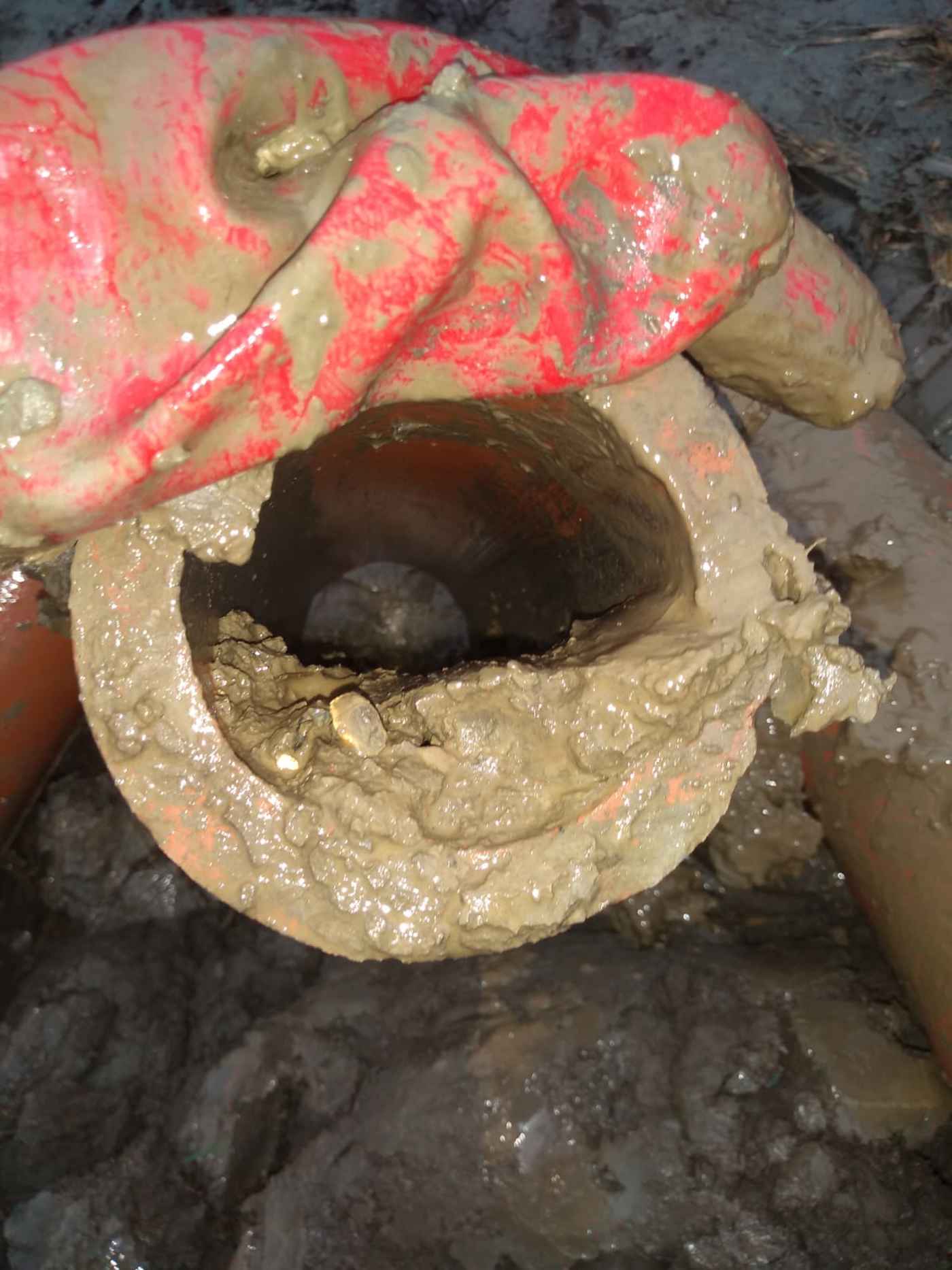
A Close Up Of What The Team Are Dealing With And Clearing With The Jetter – A Silted Tile Drain
Time to overhaul the drainage
After reviewing the farm’s drainage maps, the first task was to mark the location of the field drain outfalls, expose the outfall ends, and clear the culverts joining the farm drainage ditches to the IDB ditches.
To help clear the drains, the new S-S Professional Drainjetter will be used. The machine has been specified with a number of optional features including a larger 600m hose reel, a second high-pressure hose for manual use with stubborn blockages, and a fully featured remote control for the arm and hose.
The smaller hose will be fed in first to clear any blockages up to 100m from the outfall, followed by the main hose, which will be pre-programmed to the length of the drain.
The water intake will be placed upstream in the ditch to avoid sucking in the dirtier water coming back out of the drain. The arm will then be pinned in place at the outfall to avoid it getting pushed back if the hose encounters a blockage.
“Most of the culverts were very silted up and clearing them has allowed the ditches to flow freely,” says Will.
“One of the concerns though is whether the tiles themselves have shifted under the weight of modern heavy machinery. If we find a blockage, at first we don’t know whether it’s a tile that’s shifted or whether the drain has just silted up.
“A record is kept of every drain as it is jetted, with some requiring further remedial action. Thankfully, the majority were backfilled with stone which means most of them should still work well once they have been cleaned out with the Drainjetter and the fields mole drained.”
In case the Drainjetter encounters a more significant blockage, the farm has invested in a radio tracking device.
This is screwed onto the end of the hose in place of the standard head and fed into the pipe. A handheld receiver then locates the signal broadcast from this head, allowing the location of the blockage to be found from the surface.
Will and his team hope the Drainjetter will do the hard work and allow them to get on with improving the farm’s soils further.
Improving Farm Drainage - part one
Drainage Part Two
Join Our Community

Agrii X
We love engaging with clients and partners. Give us a follow and let's share stories for the community.

Agrii Instagram
A picture paints a thousand words. Follow us on Instagram to see what we are up to.

Agrii Facebook
Follow us on the worlds biggest social media site for the latest news and events straight to your feed.

Agrii LinkedIn
If you are all about the business, connect with us on LinkedIn to build your network
Stay In Touch

Newsletter Sign-Up
Receive email updates on topical news and information from around Agrii and UK Farming.

Listen To Our Podcasts
Listen to the Tramlines Podcast. Fortnightly chat about agriculture and trials with your host Tony Smith.

Agrii Insights
Read essential agri intelligence for profitable farming.

Find an Event
Join us for our upcoming events and tours.
